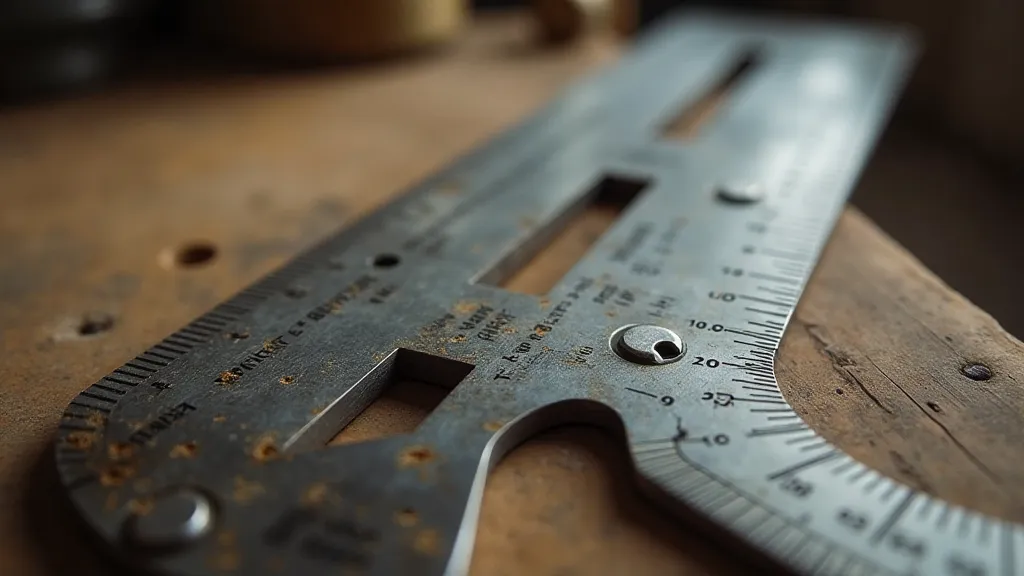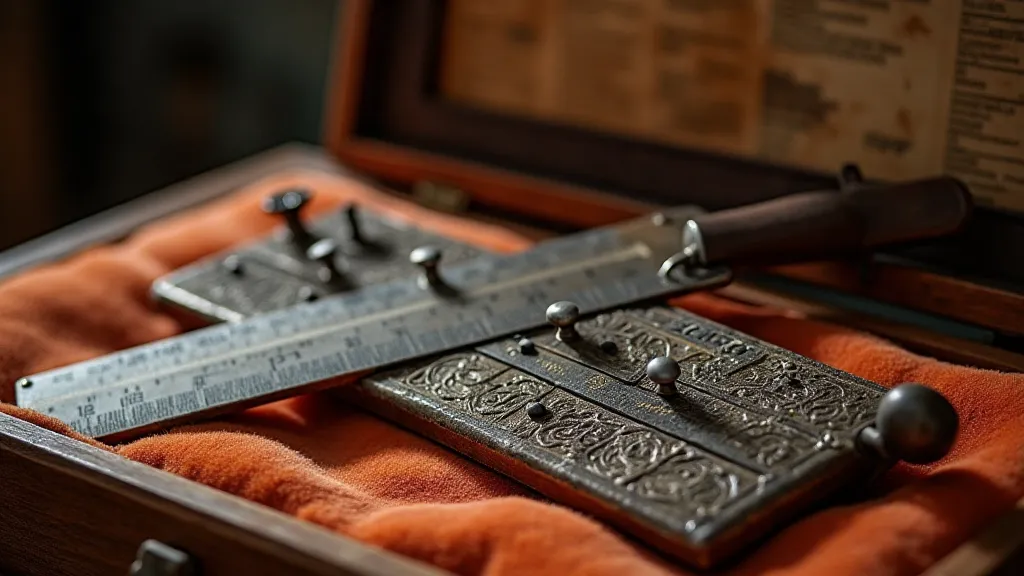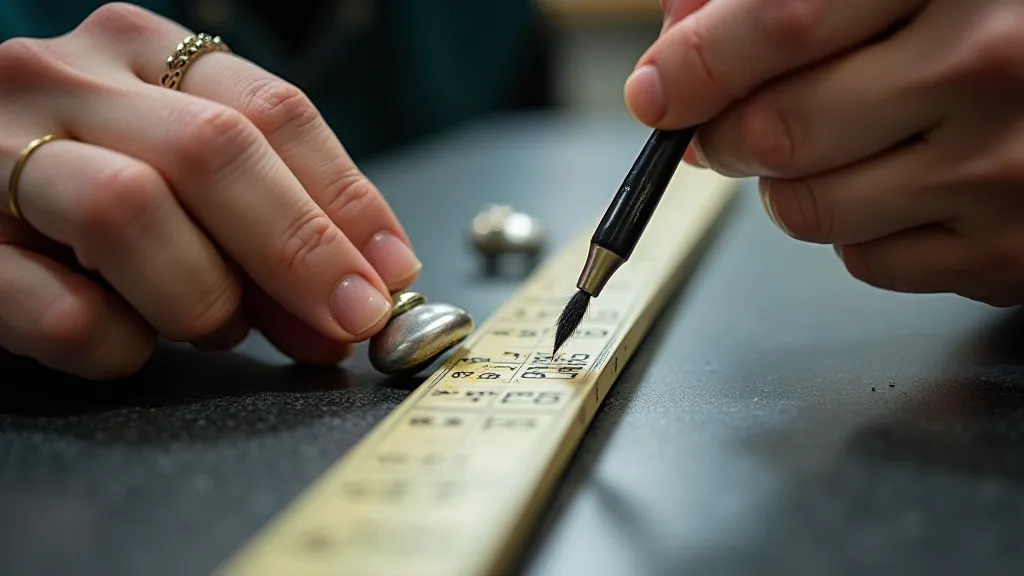The Resonance of Precision: Finding Flow Through Analog Calculation
There’s a quiet beauty in obsolescence. The slow fade of relevance can, paradoxically, amplify the intrinsic value of an object. We’re surrounded by digital speed – calculations happen in the blink of an eye, problems dissolve into algorithms. But sometimes, the urgency of instant answers obscures something deeper: the satisfaction of a process, the focus it demands, and the tangible connection to the minds that came before. This is true, perhaps nowhere more profoundly, than with vintage slide rules.
I remember finding my first slide rule at a dusty antique shop. It wasn't pristine. The scales were faded, the cursor scratched, and a faint aroma of old paper and oil clung to it. It was a Pickett Model N3, a name whispered with reverence among slide rule enthusiasts. It wasn't about calculating anything then; it was about holding something solid, something that represented a different era of engineering, an era where ingenuity was the primary tool.

A History Etched in Metal
The slide rule's story is interwoven with the rise of modern science and engineering. Originating from the work of William Oughtred in the 17th century, it evolved significantly over time, reaching its zenith in the mid-20th century before being largely supplanted by electronic calculators. The elegance lies in its simplicity: a logarithmic scale divided and moved across another, allowing multiplication, division, and other mathematical operations to be performed mechanically. For generations of engineers, architects, and scientists, it wasn't just a tool; it was an extension of their minds, a partner in problem-solving.
Think of the calculations required to design the Golden Gate Bridge, the Apollo missions, or the early jet aircraft. These weren’t done with smartphones. They were done with slide rules, fueled by ingenuity and a deep understanding of mathematical principles. Each marking, each scale, represents a testament to human ambition and the relentless pursuit of understanding the universe. The process of approximation inherent in slide rule calculations is fascinating; often a precise answer isn’t achievable, but a close enough one, skillfully arrived at, is more than sufficient and provides valuable insight into the underlying principles. It’s this art of approximation that highlights the ingenuity of engineers of the era.
Finding Flow: The Unexpected Reward
The digital age has accustomed us to instant gratification. A calculation, a result, a solution – it's all available with a tap of a screen. But this immediacy comes at a cost. The process of calculation with a slide rule, while slower, demands a different kind of engagement. It’s not simply punching numbers into a machine. It requires careful observation, a methodical approach, and a constant mental check on each step. It forces a level of concentration that’s rarely required by our modern tools.
This focused attention can unlock a state often described as "flow." Coined by psychologist Mihály Csíkszentmihályi, flow is a state of complete absorption in an activity, characterized by a loss of self-consciousness, a sense of control, and an intrinsic enjoyment of the process. Using a slide rule, particularly for a complex problem, can trigger this state surprisingly easily. The rhythmic movement of the cursor, the visual scanning of the scales, the mental choreography of the steps – it's a meditative practice disguised as a calculation. It’s a kind of mechanical poetry, where the physical act of moving the cursor and interpreting the resulting placements becomes almost meditative.
I recall once attempting a complex iteration problem with a slide rule. The calculations were involved, the numbers long. I didn’t notice the passage of time. The outside world faded away. It wasn’t about getting the answer quickly; it was about navigating the process, experiencing the logic unfold. When I finally arrived at the solution, I felt a sense of accomplishment that went far beyond simply obtaining a number. It was the satisfaction of having wrestled a complex problem into submission, using only a beautifully crafted piece of engineering and the power of my own mind. The mechanical nature of the process highlighted the elegance of the underlying mathematics, making the solution more understandable and memorable than any digital shortcut could provide.
The Craftsmanship and the Collector’s Appreciation
Beyond the mathematical utility, there's a profound appreciation for the craftsmanship inherent in vintage slide rules. The precision machining, the intricate engraving, the quality of the materials – these are all hallmarks of an era when things were built to last. Companies like Pickett, Polymath, and Duratech (among many others) poured countless hours into perfecting their designs, resulting in instruments of exceptional beauty and functionality. Understanding the grammar of gears within these instruments, and how they interact to produce accurate calculations, reveals the incredible engineering feats they represent.

Collecting vintage slide rules is more than just accumulating objects. It’s about preserving a piece of history, understanding the ingenuity of past generations, and appreciating the artistry of a bygone era. Each slide rule tells a story – of its original owner, the calculations it performed, and the projects it contributed to. The slight wear patterns on the cursor, the faded markings on the scales – these aren’t imperfections; they are evidence of a life well-used, a testament to the instrument's enduring value.
Restoration and Preservation: Respecting the Past
Restoring vintage slide rules is a delicate process. It’s not about bringing them back to a factory-new condition; it’s about preserving their character, their history. Cleaning gently, repairing minor damage, and ensuring the cursor moves smoothly – these are the goals of a responsible restorer.
The aroma of old oil and paper that clings to many vintage slide rules is often a source of debate among collectors. Some prefer to leave it untouched, believing it’s an intrinsic part of the instrument's history. Others carefully clean and preserve it. Regardless of the approach, the key is to treat the slide rule with respect, understanding that it’s more than just an object; it’s a link to the past.

The inherent imprecision of the slide rule, while sometimes frustrating, is also a key element of its charm. It forces a deeper engagement with the mathematical principles involved, and an understanding of the limitations of the tools at hand. This understanding fostered a particular brand of pragmatic problem-solving that is arguably lacking in our current era of readily available solutions. It’s a fascinating interplay of imprecision and ingenuity, which is captured beautifully in the ephemeral equations that emerge during the calculation process.
Beyond Calculation: The Sensory Experience
The experience of using a slide rule isn't purely intellectual; it's deeply sensory. The feel of the cool metal, the precise click of the cursor, the visual dance of the scales – all contribute to a rich and engaging experience. The clatter of the scales, the scent of aged lubricants, these all become part of the process – a mechanical symphony unique to slide rule calculations. It is an opportunity to connect with a tactile and physical world that increasingly exists only in nostalgia. This sensory component elevates the slide rule beyond a mere calculating instrument, transforming it into a portal to a different era, and a richer, more mindful approach to problem solving. The experience of using a slide rule, and understanding the mechanisms involved, is a true brass and intuition moment – a culmination of engineering, skill, and the elegance of mathematics.
More Than a Tool, a Connection
In a world dominated by digital speed and instant gratification, the slide rule offers something unique: a tangible connection to a time when ingenuity and meticulous calculation were paramount. It’s a reminder that true understanding comes not just from the answer, but from the process of arriving at it. It’s an invitation to slow down, to focus, and to find a flow state that can be both intellectually stimulating and deeply satisfying. Whether you’re a collector, a restorer, or simply someone seeking a different way to engage with mathematics, the vintage slide rule offers a resonance of precision that's both timeless and profoundly rewarding.





